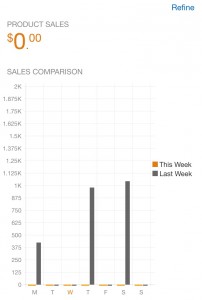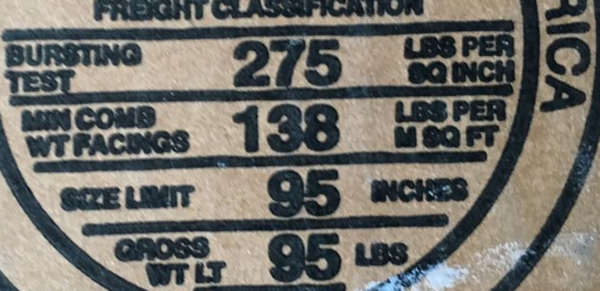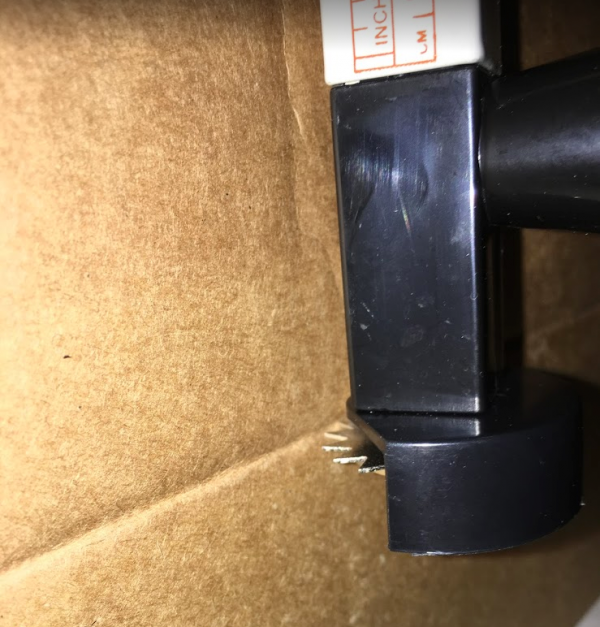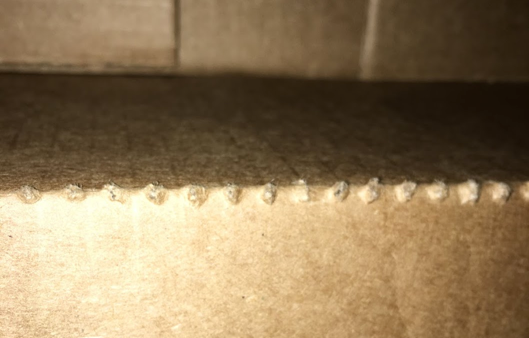In the last couple of months, I have been some inroads into reselling. My goal is to keep the number of Stock Keeping Units (SKUs) to a small number as possible and replenish with inventory as quickly as and as much as I can.
When, this happens, there are frequent stock outs as you can see from this screenshot of my sales from Amazon:

Stock outs mean lost sales. Lost sales means no revenues and profits. One week I have sales, another week I have absolutely none.
TradeGecko has a nice blog post about lost sales about Best Buy, Walmart, and Nike. Aside from the fact that they want to sell you their inventory management system, it is all relevant to know that if you are trying to stay competitive you need to have inventory. Those days when a company or person stocked out, that potential customer that would have bought from you is lost to a competitor. Worst case scenario that customer is lost forever like someone wanting to buy at Walmart now go to Target instead.
Replenishments
In my current landscape, when I send inventory replenishments to Amazon I use a box with the dimensions of 17x12x12 with the following:

It’s a very roomy box when I don’t have enough product to pick up from the stores. More often than not, I have too much space in the box. It’s foolish to fill a box with dunnage, material that will take up the empty space in the box. Why is it foolish? Because you are literally shipping air. If you can reduce the amount of air in the box, you can reduce the amount of waste all around like wasted space on a truck or additional filler material.
Stopping The Waste
For those of you who don’t know, I work in retail on the corporate side of the business, so I see many things. Over the summer, a bunch of interns researched and presented our company’s box fill rate and determined that was a low box fill rate. Notice I specifically mention box fill rate and not order fill rate. Unfortunately, I don’t remember the numbers, but we can use examples. If we had a 60% box fill rate, only 60% of the space was used by the merchandise and 40% was shipping air. With the major carriers like FedEx and UPS switching to dimensional shipment pricing that means you’d be paying extra to empty space.

You want to measure how much to reduce the box by, then score the inside of the box. Once scored, you will be able to fold the box into its new dimensions easily without crushing the box.

I used to use a knife to cut the box down, but was never straight and was a little dangerous.
Here is a link to a video on how to use the sizer. Quite simple and effective. After adding this tool into my toolbox, with the smaller boxes there’s less movement and things bouncing around which makes for a sturdier shipment. I have had a few boxes crushed because there was too much space in a box. Sure, I can start with smaller boxes, but the boxes I mentioned I have a near unlimited supply and are free in pristine condition and reselling.
How much time does it take to resize a box with this tool?
No more than 5 minutes per box. I took no more than 10 minutes to do the first one to get the hang of it and take some pictures.
Where do you get these boxes?
My local Dunkin Donuts
I have absolutely no idea what this post is suppose to be about.
Staying efficient and creating less waste